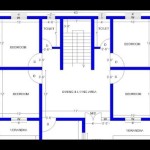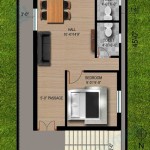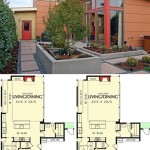Simple Floor Plan With Dimensions In Mm: A Comprehensive Guide
Creating a simple floor plan with dimensions can be a crucial step in planning and designing any interior space. It provides a clear visual representation of the layout, dimensions, and relationships between different rooms and elements within a building. Whether you're a homeowner, architect, or interior designer, understanding the essentials of floor plans with dimensions is essential for effective space planning.
Floor plans are often drawn to scale, using a specific ratio to represent real-world measurements. The most common scales used in floor plans include 1:50, 1:100, and 1:200. For simplicity and clarity, floor plans typically use millimeters (mm) as the unit of measurement. This allows for precise measurements and detailed planning.
When creating a floor plan, there are several essential aspects to consider:
Scale:
Scale is a critical aspect of floor plans as it determines the accuracy and usability of the drawing. Choose a scale that allows you to clearly represent all the necessary details without making the plan too large or cluttered. Common scales used in floor plans range from 1:50 to 1:200, with 1:100 being a widely used option.
Measurements:
Accurate measurements are essential for a functional floor plan. Use precise measurements to represent the dimensions, lengths, and widths of walls, doors, windows, and other elements within the space. These measurements should be clearly labeled and visible on the drawing.
Walls and Openings:
Walls form the boundaries of different rooms and spaces within a floor plan. Clearly indicate the thickness of walls, including interior and exterior walls. Show the location and size of doors and windows, and specify their swing direction. This information is crucial for understanding the flow of traffic and natural light within the space.
Furniture and Fixtures:
To create a realistic representation of the space, include furniture and fixtures in your floor plan. This helps visualize how furniture will fit within the space and plan for traffic flow. Use symbols or scaled drawings to represent tables, chairs, sofas, beds, and other essential elements.
Appliances and Utilities:
Don't forget to include the placement of appliances and utilities within the floor plan. Indicate the location of refrigerators, ovens, sinks, toilets, showers, and other necessary fixtures. This helps with planning for electrical, plumbing, and ventilation requirements.
Notes and Annotations:
Add notes and annotations to your floor plan to provide additional information or clarifications. This could include notes on materials used, ceiling heights, special requirements, or any other relevant details. These annotations enhance the readability and understanding of the plan.
Creating a Simple Floor Plan:
Follow these steps to create a simple floor plan with dimensions in mm:
- Measure the space and record the dimensions accurately.
- Choose an appropriate scale for your plan.
- Sketch the outline of the space, including walls, doors, and windows.
- Label and dimension all walls, openings, and other elements.
- Add furniture and fixtures to visualize the space.
- Include notes and annotations for additional information.
A well-designed floor plan with dimensions in mm provides a fundamental tool for planning, designing, and communicating space requirements. It serves as a blueprint for architects, interior designers, contractors, and homeowners to collaborate effectively and create functional and aesthetically pleasing spaces.

12 Examples Of Floor Plans With Dimensions

Floor Plan With Dimensions 1 One House Plans Bungalow Cottage

A Floorplan Of Single Family House All Dimensions In Meters Scientific Diagram

How To Read A Floor Plan With Dimensions Houseplans Blog Com

Floor Plans With Dimensions Including Examples Cedreo

The Ground Floor Of House Layout And Dimensions In Cm Scientific Diagram

Floor Plans With Dimensions Including Examples Cedreo

One Y House Design 2024002 Single Plans Bungalow Floor

House Plans 12x15m With 4 Bedrooms Home Ideas Bedroom Simple Design

Autocad 2d Floor Plan With Dimensions
Related Posts








